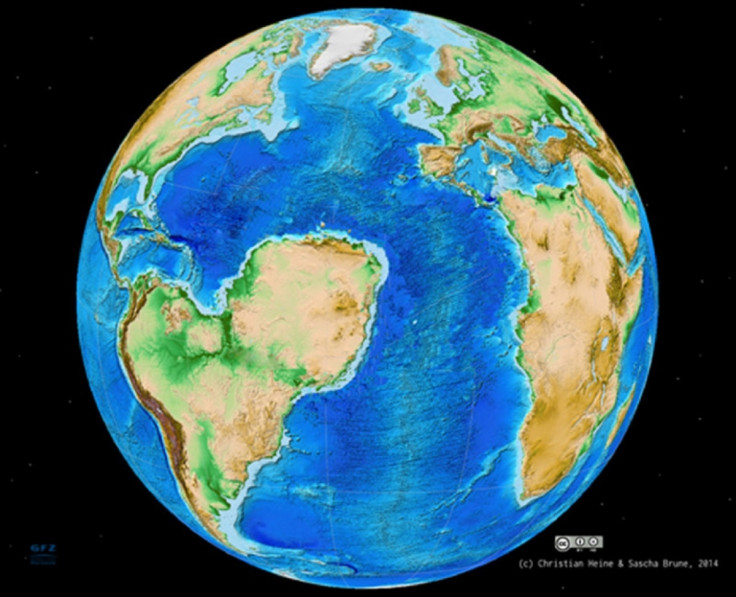Map of How Earth Would Have Looked if Supercontinent Gondwana Had Broken Up Differently

A map showing what Earth would have looked like had the supercontinent Gondwana broken up differently has been created by researchers.
The map looks at how the world would be completely different if the South Atlantic and West African rift had split, instead of the rift that emerged along the Equatorial Atlantic margins.
Geoscientists at the University of Sydney and the GFZ German Research Centre for Geosciences used sophisticated plate tectonic and 2D numerical modelling to create the map.
The Gondwana supercontinent broke up 130 million years ago leading to the creation of South America and Africa.
However, for millions of years before this, the southern continents of South America, Africa, Antarctica, Australia, and India were united as Gondwana.
It is still unclear why Gondwana fragmented, but it is understood if first split along the East Africa coast in a western and eastern part, before South America separated.
"In a dramatic plate tectonic twist, however, a competing rift along the present day Equatorial Atlantic margins, won over the West African rift"
Study author, Sascha Brune
Christian Heine and Sascha Brune looked at why the South Atlantic part of the giant rift system became an ocean basin, while the northern part along the West African rift got stuck.
"Extension along the so-called South Atlantic and West African rift systems was about to split the African-South American part of Gondwana North-South into nearly equal halves, generating a South Atlantic and a Saharan Atlantic Ocean," Brune said.
"In a dramatic plate tectonic twist, however, a competing rift along the present-day Equatorial Atlantic margins, won over the West African rift, causing it to become extinct, avoiding the break-up of the African continent and the formation of a Saharan Atlantic ocean."
Their model shows how South America would have been about twice the size it is now, with a huge expanse of land attached to the north east corner.
Researchers say their numerical models provide a simple explanation for why the continent split the way they did – because the bigger the angle between the rift trend and extensional direction, the greater force needed to maintain a rift system.
The angle of the West African rift needed distinctly more force to shift than its Equatorial Atlantic opponent, the researchers concluded.
© Copyright IBTimes 2025. All rights reserved.






















